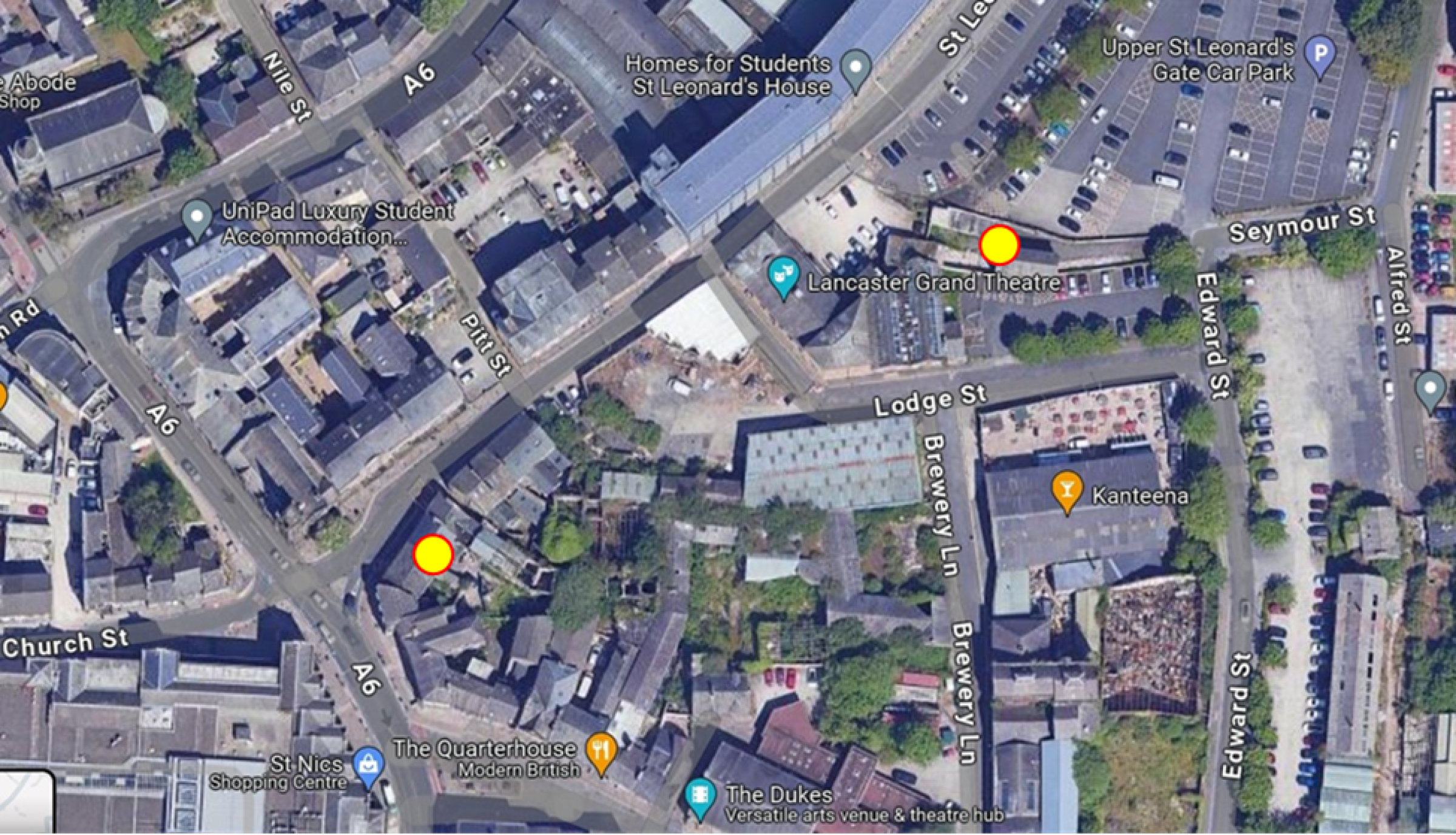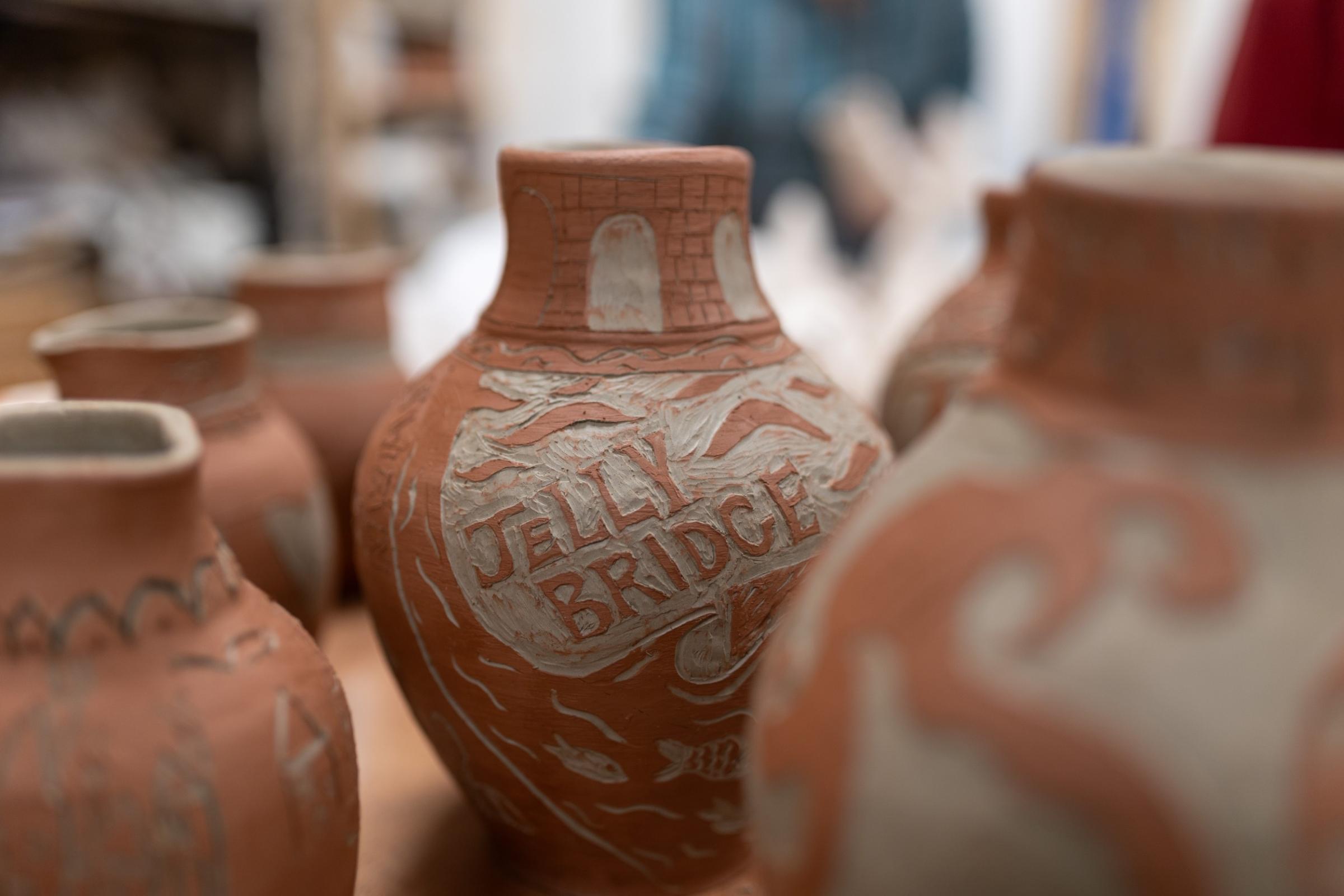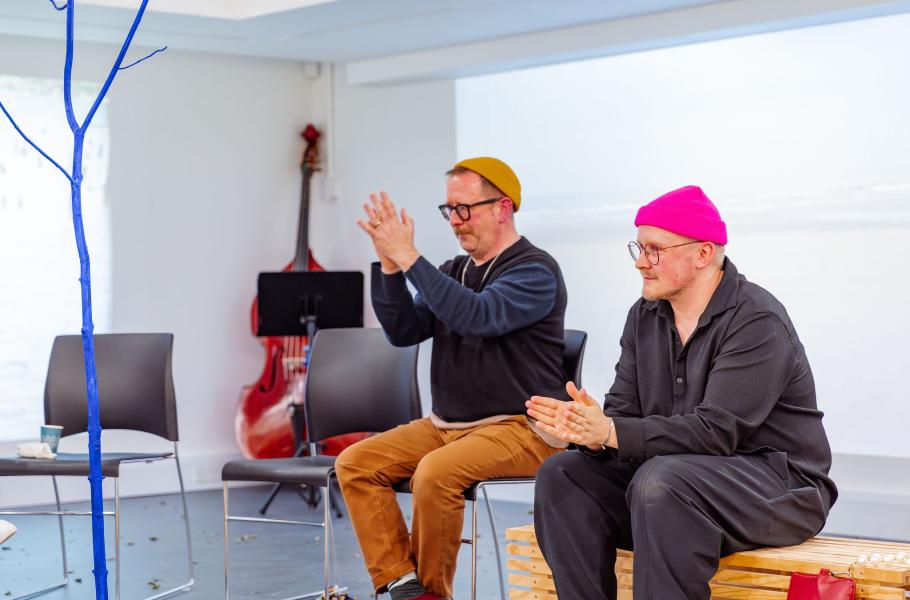Flowing Forward: the Mill Race’s Legacy
Mill Race: Flow of Change, was a cultural programme that Lancaster Arts oversaw in partnership with Lancaster City Council over three years, through funding from Historic England. The programme animated the Mill Race area of Lancaster, so-called due to the historic watercourse running beneath the streets that used to power the town’s early industries. Between 2021 and 2024, 14 commissions took place in the Mill Race area, including music, exhibitions, dance, craft, theatre, film and happenings in the street. In this blog, Lancaster Arts Associate Creative Producer, Ella Alemayehu-Lambert reflects on some of the project’s emerging legacies and shares how you can stay involved.
I am fortunate enough to spend time in the Mill Race Area regularly, and I am usually reminded of the creativity, community and rich history this place holds each time. This is a gift that I owe largely to everyone who partook in the programme - which has finally come to a close. Looking back to the beginning of my involvement last Spring when I had just moved to Lancaster, I am amazed at just how many friendships, memories and stories I have gained in such a short space of time. As Lancaster Arts begins a new season of work and we see what legacies continue to emerge from this programme, you can keep the mill race flowing in the following ways:
Read article in Lancashire Life’s summer edition about the programme.
Take a walk to the two new Mill Race Murals - designed by Steve Carne of Carne & Co, who also created the Mill Race logo. The first can be found above 137a St Leonardsgate, and the other is on the former dance studio in St Leonard’s Place at the back of the Grand Theatre. You can find the location of these murals identified by the yellow circles on the map below.

See the Mill Race Jugs, which were created and designed by Rose Atherton and Logan Obermeyer at Lancaster Pottery Studio in collaboration with many community groups across Lancaster (including Lancaster Black History Group, Standfast and Barracks and the Year 6 Children of Christ Church Primary School - to name a few). These jugs will shortly be displayed in their permanent home at Lancaster Pottery Studio – now on Moor Lane! You may have already seen the jugs exhibited at both Lancaster Maritime Museum and Lancaster City Museum in the Spring, and we will continue to share plans for exhibiting these jugs in other places within and beyond the Lancaster District in future!

Pick up a copy of A‘live’ place: Experiencing the Mill Race through Arts and Culture, to find out more about the programme and how arts and culture can shape how we feel about a place. The publication is available at Lancaster’s City and Maritime museums. Donations towards the costs of the book will go to the Church’s Conservation Trust, who have been generous partners to the project over the last three years with the use of St. John’s Church.
One of the ideas that the publication A ‘live’ Place draws out is that ‘places are far from static and deeply shaped by the emotions, memories and imaginaries they stir’. Alongside some of the obvious things the project leaves as its legacy (as above), there are also those legacies that are more amorphous and difficult to define. For dance artist, Jenny Reeves, who collaborated with artists and participants to create Spill the Mill Race, some of the project’s strongest legacies ‘would definitely be about different collaborations, and being brave to be more experimental in my work. Plus making new connections with local artists.’ Similarly, Nick Moule, a member of the Mill Race Cultural Consortium shared that for him the value of such programmes as this is they ‘build sustainable communities’.
As Jenny and Nick’s reflections both suggest, there are new communities and experiential shifts within a place which, alongside films, jugs and other more tangible outcomes, all contribute to a meaningful legacy.
An example of a new community formed through the programme is the Consortium, which has overseen commissions over the last year. Across Lancaster Arts, Lancaster City Council and the Cultural Consortium, we are continuing to have conversations about what the future might hold. Whether it transpires that this group is maintained over future projects, or that the programme comes to a natural end here remains to be discovered – and we will keep you posted on this. For the time being, you may see some of the cultural consortium getting involved in other projects (such as LANDING, which took place on Morecambe Promenade this summer), and others may be interested in joining our Ideas&Connectors Group.

And then there are the remaining complex, dynamic and kaleidoscopic legacies that the programme continues to offer – namely the memories made, and their shifting resonances in people’s minds, the ever-changing feelings that we will continue to have when we spend time in the Mill Race area, and the deepening relationships with people, artworks, buildings and more. We want to thank you for all the ways you have contributed your time, curiosity, care, creativity and ideas, and we will see where the waters flow next…
You can find out more about the programme by reading our earlier blog, Shaping a City Together, or taking a look at the Mill Race website.





